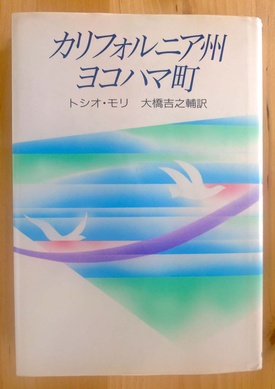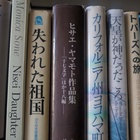Toshio Mori, who is said to be the first Japanese-American writer, published a collection of short stories titled "Yokohama, California" (The Caxton Printers, Ltd., Caldwell, Idaho) in 1949. 29 years later, in 1978, it was published in Japan by the Mainichi Shimbun Company under the title "California, Yokohama Town" translated by Yoshinosuke Ohashi.
The setting is the Japanese community on the West Coast of the United States before the war, but the story vividly depicts the unchanging essence of humanity, regardless of time or borders, in its everyday life, making it a work that is still worth reading today. However, unfortunately, it has been out of print for quite some time.
When Yokohama, California was published, the renowned contemporary novelist and playwright William Saroyan (1908-1981) wrote a preface.
Of the thousands of American writers in hiding, there are probably fewer than three who write English as poorly as Toshio Mori.
Nevertheless, Toshio Mori is probably one of the most important writers working in America today.
Saroyan praised Mori for having eyes that "can see the truth in things, and in men the mysterious, comic, and melancholic truths which transform fools into great and solemn heroes," and for possessing a heart of "understanding, sympathy, tolerance, and compassion" as a true writer.
Saroyan is a second-generation Armenian whose father fled to America from Turkey, and he left behind a work called "My Name Is Aram," which depicts the Armenian community in America from a warm and humorous perspective through the eyes of a second-generation Armenian boy. In Japan, it was republished last year as "My Name is Aram," translated by Motoyuki Shibata, as part of the Shincho Bunko series of new translations and reprints.
Mori, a second-generation Japanese-American, portrays the lives of people living in the Japanese-American community in California, just like Saroyan. According to the translator's afterword to "My Name is Aram," one of Saroyan's rules for writing was to "forget about Edgar Allan Poe and O. Henry and write." In other words, he didn't write calculated stories, and in this respect, Mori's style is similar.
Mori was born in 1910 in Oakland, California, a city on the shores of San Francisco Bay. Mori's father, a farmer in Hiroshima Prefecture, left his wife and two sons behind to come to the United States, where he worked in the sugarcane fields of Hawaii and then ran a bathhouse in Oakland. He then called his wife and children over to live with him, and Mori, his third son, was born.
Eventually, the family moved to a town called San Leandro, on the outskirts of Oakland, where they began cultivating carnations and other fruits. At his local high school, he was known for his sports, particularly baseball, and even played for the Chicago Cubs for a short time.
Mori took over his parents' flower farming business and devoted every spare moment to his creative endeavors. During the war, he was incarcerated in the Topaz internment camp in Utah, but he continued to write.
Mori was so impressed by the American author Sherwood Anderson's Winesburg, Ohio (1919) when he was young that he named his own work Yokohama Town, California after the novel.
Also, Mori's parents were from a region on the Setouchi coast in western Hiroshima Prefecture called Yokohama. The world depicted in the collection is clearly modeled on the town of San Leandro where Mori lived.
Mori's short stories are not stories with particularly dramatic developments or punch lines, but rather depict the events and interactions of ordinary people and families in their daily lives. The human interest stories he depicts have universal appeal.
"Say It With Flowers" is the story of a young man working at a Japanese flower shop who becomes unable to tolerate the profit-first approach to selling flowers, goes against the store's policy, sells beautiful flowers to customers, and is fired with a sense of relief in his heart.
Among the short stories, there are some that are unique to the world of people who immigrated from Japan. In "Nodas In America," a father answers his young children's innocent questions, telling them the reasons for coming to America and the hardships they faced. Readers will feel a warmth in watching the history of a new family in a new country unfold.
"Tomorow Is Coming Children" is the story of a first-generation Japanese grandmother's life and resolve as she tells her grandchildren. The grandmother, who came from Japan to marry, is now in an internment camp as the war begins. She reflects on her life in American society and says that although war is cruel, it has helped her understand where her heart lies. "I want to die in America and be born on American soil," the grandmother says.
Toshio Mori's other works include "The Chauvinist and Other Stories, 1979" and "The Woman from Hiroshima, 1980."
(Titles omitted)
© 2017 Ryusuke Kawai







